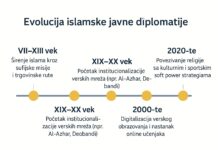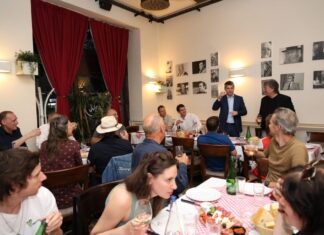What is your background?
 My professional life began with object oriented programming back in the mid 90’s. My first ‘real’ job was as programmer and then a team leader at the Israeli Electric Company, developing software for Emergency Management.
My professional life began with object oriented programming back in the mid 90’s. My first ‘real’ job was as programmer and then a team leader at the Israeli Electric Company, developing software for Emergency Management.
In late 1998, with the burst of the first .com bubble, my job seemed less and less stable. After few months of uncertainty I decided to pursue a childhood dream of travelling the world. I was 25 years old with some money in my pocket. Africa seemed the most adventurous. I began my African journey on June 1999 in Morocco and by August 2000 I’ve crossed the entire continent all the way to Congo, overland, with a short 6 months stay in Dakar Senegal.
From Africa I set sail to East Asia and traveled everywhere from Siberia to Australia until January 2001. For financial reasons I took a 7 months temporary post at the Israeli Embassy in New Delhi India and a subsequent one year contract at the Israeli Embassy in Beijing China which lasted until August 2003. It was during this time of temporary Embassy contracts that I grew more and more fascinated by the world of International Relations.
Having decided to pursue a Diplomatic career which required a totally different academic background, at age 29, I went do a B.A. in Political Science and Development Economics at Carleton University in Ottawa, Canada. After 3 years I moved to NY for an internship in a political think-tank which lasted 11 months and in October 2006 I returned back to Israel after more than 7 years of absence.
Admission to the Foreign Affairs Academy in Israel requires much preparation and a year-long examination process. Since the innovation market was already booming in Israel by that time, Jobs in the industry were easy to find. I took the position of Chief Operations Officer of a young startup which specialized in data-mining and research of intellectual property (patents) while I was preparing myself for the admission exams for the Foreign Affairs Academy. My position there enabled me to catch-up on more than 7 years of disconnect from the tech pulse and reacquaint myself with the latest advancements in technology. Working at the forefront of innovation enabled me to familiarize intimately with the most innovative trends in Israeli Innovation.
By December 2008, age 35, after passing the required examinations, I’ve entered into the Foreign Affairs Academy. Upon Graduation a year later, I’ve entered the diplomatic corps of the Israeli Ministry of Foreign Affairs and received my first Diplomatic posting as Deputy Chief of Mission at the Embassy of Israel in Abidjan Cote d’Ivoire on January 2010.
On April 2011, following a civil war in the country and the subsequent temporary closure of the embassy, I was offered the position of Director of Public Relations at the Embassy of Israel in Paris. A post I’ve occupied for 4 and a half years until August 2015. The violent terror attacks which happened in France during my stay there and the unusual approach I’ve developed to address some of the key factors which led to them earned me a proposition to return back to the Ministry Headquarters in Jerusalem and create from scratch the first Research & Development Department for Digital Diplomacy.
How did it lead you to what you do now?
This Research & Development Department for Digital Diplomacy I’ve been tasked with is somewhat unique. On the one hand, I’m a professional Diplomat, a very traditional line of work that hasn’t changed much in the past few hundred years. On the other hand, my team and I are engaged in developing innovative algorithms and software with the purpose of advancing and promoting diplomatic objectives. To put it simple, I pioneer a new field of diplomacy, which, to my knowledge, does not exist in any other Ministry of Foreign Affairs out there. The term I often use to describe this new field is algorithmic or code-based diplomacy. In essence, I develop software which harnesses the massive influence which digital media has on the way people formulate their world view and use it to either advance the spread of positive narratives or inhibit the spread of violent narratives. All done in the digital sphere through the use of digital tools.
This totally new digital approach was conceived following the Toulouse massacre on March 2012 and the details unraveled by the investigation which followed. In the aftermath of the massacre, when the identity of the perpetrator, 17 years old second generation Muslim immigrant Mohammed Merah began to unfold, it became more and more clear that the young became radicalized through exposure to violent hate content on social media. The following Muslim riots in the Parisian suburb of Trappes on July 2013 bore witness to the same process of radicalization over social media. So were the perpetrators of the Charlie Hebdo attack and Porte de Vincennes siege in Paris on January 2015.
Having the programming background I had, I began experimenting with basic algorithms which either inhibit the spread of violent and hateful content or help spread more virally the positive narratives to counter the violent ones. The more I delved into this algorithmic realm the more I’ve became aware of the footprints of similar algorithms used by various radical Islamic groups in Europe and outside of it, designed to either increase the spread of radical information among certain audiences, or limit the spread of others.
One distinct example where such algorithmic techniques were used by radical Islamic groups in France was the use of the simple yet highly effective Astroturfing techniques by radical Islamic groups to kidnap the attention of traditional media to their cause. The case was exposed and published by the Belge researcher Nicolas Vanderbiest in the journal Rue89 on August 2015.
Once becoming fully aware of the situation I began diverting a considerable amount of the resources at my disposal for experimenting and developing different counter algorithms to address the problem. When my actions began to prove empirically successful I was proposed to come back to Jerusalem and work on such solutions on a much larger scale.
What is a typical day like for you as Director of R&D?
Similar to commercial R&D, my work is about finding ways to solve real life problems. My team and I work closely with all the personnel responsible for digital diplomacy at the Ministry headquarters in Jerusalem and the Embassies worldwide. In most cases they will be the first to notice irregular patterns in the flow of information in the digital sphere.
Back when we started, about a year ago, we’ve spent some time programming an array of listening algorithms which behave similar to Google Alerts, only instead of being triggered by webpages containing certain keywords, our listening algorithms are triggered by certain occurrences in the social media sphere. We look for unusual viral patterns of hate or violent content on social media. For example the diffusion of a new ISIS video or the call for shihad (martyrdom) by Hamas or other radical Islamic groups.
We have a couple of long-term projects which require heavy coding and lots of beta testing. These projects are often contracted to out-side freelance coders or development companies. Working with external resources requires hands on in both the characterization phase and the development stages.
The short-term smaller projects we do in-house. These projects are often the product of brainstorming or ideas that look promising yet require some testing. More than once a project that started as a small in-house development proved to be either highly effective and/or very complex and then it would be transferred for development externally. In these cases full specs are prepared.
Can you explain more about your code based approach to diplomacy? How does it work, what sort of outcomes are you hoping for?
A lot of algorithms we develop are for internal use but here are two projects. The first consist of a software designed to amplify the spread of positive narratives. The second, a software designed to inhibit the spread of violent or hateful narratives.
Counter messaging of violent extremism online demands the availability of opposite positive narratives. One example of how we do that is the israelretweeted.me/join project. We designed a small twitter application which enables individuals who are interested in positive information about Israel to assist in spreading it faster without requiring of them any particular action.
The lesshate.org project was one of the earliest applications we developed. We designed a software to combat violent extremism and radicalization leading to terrorism (aka VERLT) on social media. The idea behind the project was to create an online community of concerned individuals based on the one-for-all all-for-one concept. The project consists of a browser plugin which enables each member of the online community to alert all other members whenever violent extremism is identified. The plugin than will automate consensual reporting process on behalf of all members. This project is now available for users worldwide and is currently used by hundreds of concerned individuals in 37 countries.
What trends are you excited about in the near future in terms of tech innovations?
On the short-run there are two tech domains which seem to be quite trending. The first is driverless cars and the second is micro-satellites.
We are hearing more and more about European and American automobile manufacturers who partner with tech companies and startups on a race for the first driverless car. Goggle, Uber, Mercedes, BMW and Tesla are just few of the companies in the race. One Israeli tech company which is considered a leader in the field and worth following is Mobileye. The amount of partnerships they signed in the past year is quite phenomenal.
When comes to micro-satellites, one needs to bear in mind the high costs and high risks involved in the satellite industry. Micro-satellites not only increase the survivability by increasing redundancy but also considerably reduce the deployment costs. One Israeli startup I would recommend following is NSLComm which is developing a shoe-box size communication satellite with an expandable large aperture dish made of foldable memory polymers. In using a foldable high gain dish, the company managed to reduce dramatically the payload size without losing gain while expanded in orbit.
The more exciting long-run trend I am quite fascinated with is the untapped potential of zero-gravity tech. In essence, the zero-gravity tech pertain to things that could be made in a zero-gravity environment, therefore could not be manufactured on earth. Such tech includes new and exciting ways to minimize and compact silicon molecules to make, for example, smaller and faster computer chips. It could also mean new, currently unattainable, chemical compounds for new generation of drugs. One Israeli startup which is taking first steps in this direction is SpacePharma which manufactures miniaturized automated laboratory capsules which, once taken to outer space, can perform remote controlled zero-gravity chemical research.
You recently tweeted about Israel’s latest space launch, what wider benefits are you hoping this will bring?
Despite the cliché, space is indeed the final frontier J For a small country like Israel, being at the forefront of space research is not merely an achievement to be proud of but also a strategical and even geopolitical necessity. We might lack the necessary resources required for the funding of projects in the magnitude of NASA or ESA but by keeping our academies and industry up to date, Israeli researchers and Israeli companies play a vital role in advancing the projects of NASA, ESA and others.
One remarkable project I would like to point out is the SpaceIL initiative, which aims for Israel to be the 4th nation to land on the moon after the USA, Russia and China. This project is part of the Google Lunar XPrize challenge. The whole project operates as a non-profit organization funded by private donations with a team of scientists and engineers driven by the thrill of the challenge. According to the directors of the Google Lunar XPrize challenge, the Israeli team is considered quite promising.
What can we expect from the upcoming DLD event in Tel Aviv? (See this piece we ran earlier this year)
The one thing I really look forward to is the Start Tel Aviv Competition. Every year on the sideline of the DLD Conference, the city of Tel Aviv in collaboration with the Ministry of Foreign Affairs of Israel hold and international competition among startups from around the world where the winners get a free ticket to participate in the conference and some lucrative encounters with investors and industry gurus.
This year the competition celebrates women entrepreneurship. The winners arriving in Tel Aviv will be women founders and entrepreneurs from 31 different countries to compete for the opportunity to take part in an intense, five-day startup experience in Tel Aviv’s startup ecosystem. Traditionally, the winners represent the most promising early stage startup each country has to offer.
What do you wish was already invented / mainstream to make life easier?
The moment the thing that troubles me the most is parking J still waiting for that ultimate app that will guide me to the closest available parking to my destination J
By @SimonCocking. Interesting in depth interview with Elad Ratson #Diplomat, Director of R&D at the Ministry of Foreign Affairs of #Israel. Using #code to pioneer algorithmic approach to #DigitalDiplomacy.
http://irishtechnews.net/ITN3/using-algorithms-to-achieve-digital-diplomacy-a-conversation-with-elad-ratson-director-of-rd-at-ministry-of-foreign-affairs/?utm_source=feedburner&utm_medium=feed&utm_campaign=Feed%3A+IrishTechNews+%28Irish+Tech+News%29












